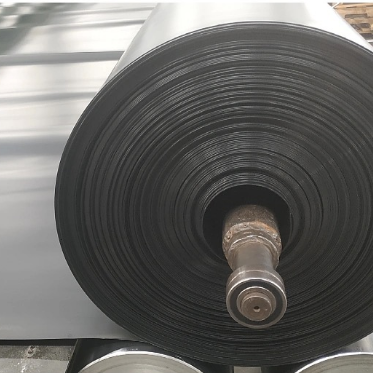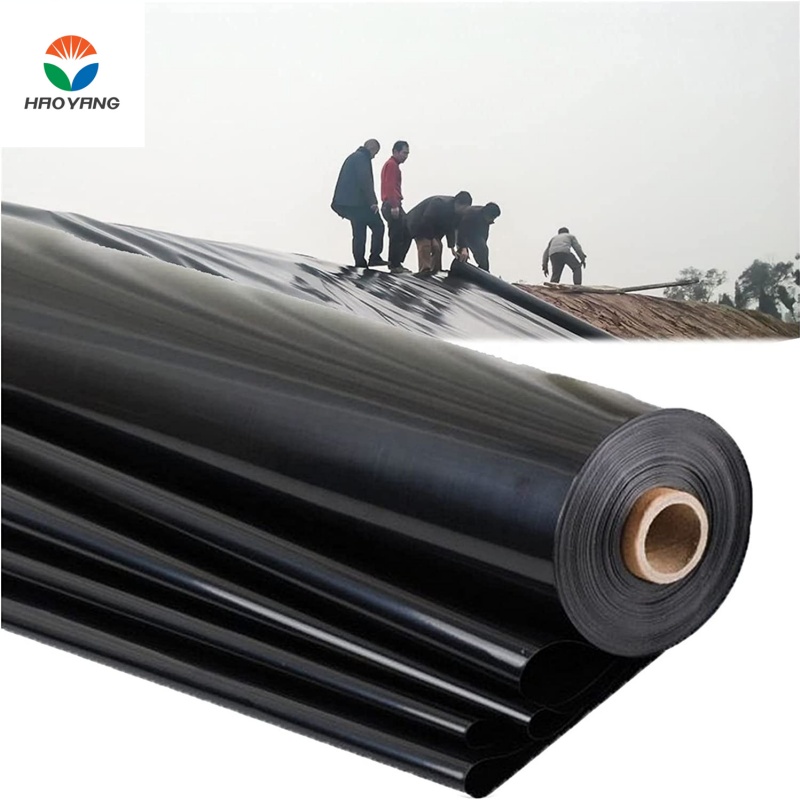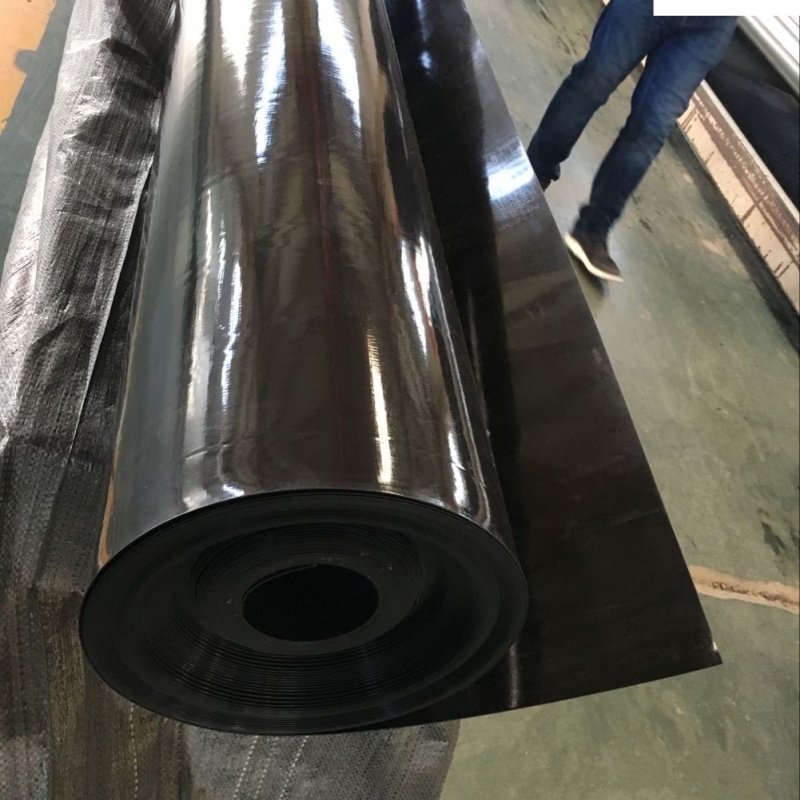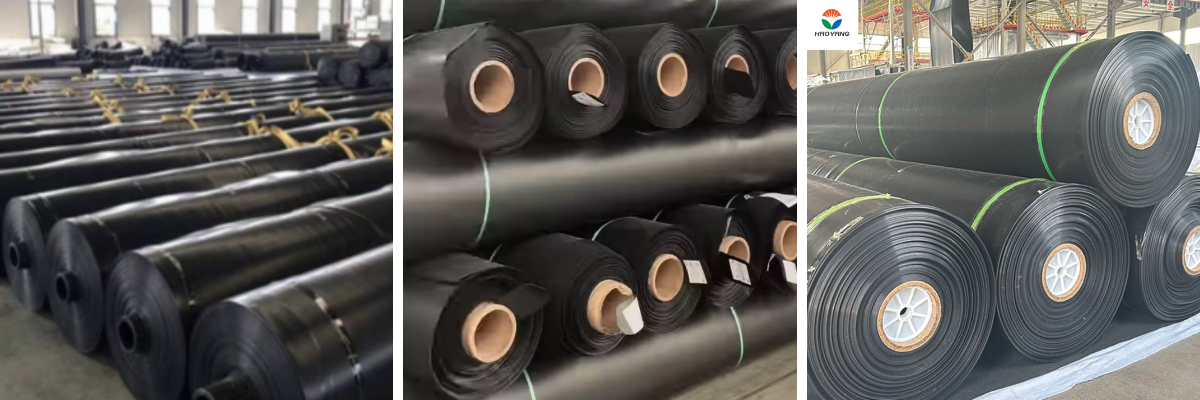0.75mm HDPE Pond Liner Price
1.Excellent anti-seepage performance: The 0.75mm HDPE Pond Liner has an extremely low permeability, which can effectively prevent liquid leakage and ensure the stability of water levels in ponds, pools, and other water areas, avoiding water resource waste.
2.High strength and durability: Made of high-quality high-density polyethylene material, it has excellent tear resistance and puncture resistance, and can withstand certain external force impacts and friction.
3.Excellent chemical stability: It has good tolerance to various chemical solutions such as acids, alkalis, and salts, and will not undergo corrosion or deterioration due to contact with common chemical substances.
4.Anti-ultraviolet and anti-aging: With a special formula added, it has excellent anti-ultraviolet performance, which can effectively resist the erosion of ultraviolet rays in sunlight and slow down the aging speed of the material.
Product Introduction
0.75mm HDPE Pond Liner is made of high-quality high-density polyethylene and has excellent performance. It has an appropriate thickness, strong anti-seepage ability, and can effectively prevent water leakage. It has excellent puncture and tear resistance, good durability, and can withstand various complex environments. It has good chemical stability and is resistant to acid and alkali corrosion. It is widely used in fish ponds, water tanks, and landscape lakes, and the price varies depending on the order quantity.
Product Specifications
Parameter | Details |
Material | High-Density Polyethylene (HDPE) |
Thickness | 0.75 mm (0.03 inches) |
Tensile Strength (MD/TD) | ≥25 MPa (Machine Direction/Transverse Direction) |
Elongation at Break | ≥700% |
Puncture Resistance | ≥500 N (ASTM D6241) |
UV Resistance | ≥90% retention of tensile strength after 1000 hours UV exposure (ASTM G53) |
Chemical Resistance | Resistant to acids, alkalis, salts, and most industrial chemicals |
Temperature Range | -76°F to 176°F (-60°C to 80°C) |
Standard Sizes | Customizable (Typical widths: 3m–15m; lengths: 50m–200m) |
Application | Ponds, lakes, reservoirs, irrigation canals, wastewater treatment facilities |
The following are the 5 major factors influencing the price of 0.75 mm HDPE fish pond liner:
1.Raw material cost:
The price of HDPE pellets is affected by fluctuations in the oil market. An increase in crude oil prices will directly push up the production cost of the cushion.
2.Specifications and customization requirements: The width, length, thickness of the cushion (although fixed at 0.75mm, large-scale customization may affect the processing difficulty) and whether an anti-ultraviolet enhancement formula is needed, all of these will change the price.
3.Purchase quantity:
Bulk purchases usually enjoy discounts. Small batch orders have higher unit prices due to the high production and debugging costs.
4.Production process and brand: Products of major brands or those using technologies such as co-extrusion and surface anti-slip treatment have higher prices than ordinary process cushions.
5.Transportation and taxes:The thickness of the fishpond liner is usually directly proportional to its price.
1.From the perspective of raw material costs: The amount of raw materials used to make the fish tank liner will increase as the thickness increases. For example, if the production of a 20-millimeter (approximately 0.5mm) thick HDPE fish tank liner costs per square foot is assumed to be $0.35 - $0.60, then a 30-millimeter (approximately 0.75mm) thick one, due to the nearly half increase in raw material usage, will have a corresponding higher cost and the price may be in the range of $0.50 - $1.10.
2.From the perspective of processing difficulty: As the thickness of the liner increases, the processing difficulty in the production process will also increase. Thick liners require higher melt pressure and more precise temperature control technology, and equipment wear and energy consumption costs will increase. At the same time, the probability of defects in production may also rise, leading to an increase in the scrap rate, which will cause the processing cost to rise and thus drive up the price. For example, the processing cost of a 45-millimeter (approximately 1.14mm) thick liner may be 20% - 30% higher than that of a 20-millimeter one, and its price will also be significantly higher, approximately in the range of $1.10 - $1.60 per square foot.
3.From the perspective of performance and durability: Thicker fish tank liners usually have better performance and a longer service life. For example, thick liners used in large fish tanks or in complex geological areas can provide stronger puncture resistance and anti-sinking capabilities, meeting higher anti-seepage standards. For some thick liners with special performance requirements, such as enhanced UV resistance and chemical corrosion resistance, additional formula upgrade costs may also be added, so the price will be higher. For instance, a 60-millimeter (approximately 1.52mm) thick liner with special performance, the price may be $1.75 - $2.00 per square foot or more.
4.From the perspective of market supply and demand: Regular thickness fish tank liners, such as 20 - 30 millimeters, have a large market demand and a high degree of production scale, so the unit price is relatively more competitive. While some unconventional thickness liners have less customized demand, higher production line adjustment costs, and fewer orders, the unit price may increase by 30% - 50%. For example, specially customized 10-millimeter (approximately 0.25mm) or 80-millimeter (approximately 2.03mm) thick liners, their prices may deviate from the price range of regular thickness products.











